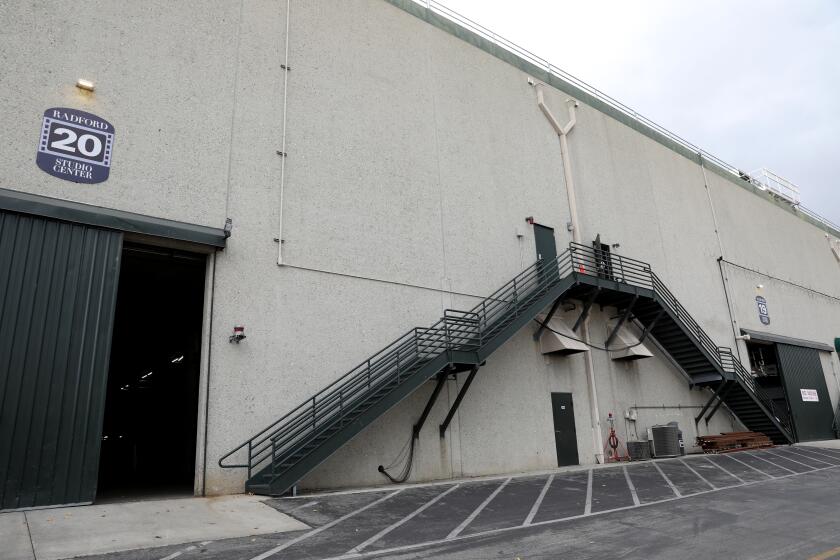Golly Gee! Comic Books Aren’t Just for Kids Anymore
Most days, Phil Nonneman wears a three-piece suit and sells bonds for a bank. But on Friday, the 33-year-old business executive stood garbed in shorts and a red T-shirt selling quite a different commodity:
Comic books.
These were not just any comic books, mind you, but collector’s editions, some ranging in price up to $350. And Nonneman was not alone.
All about him, mingling among tables and magazine racks stacked with issues of Superman and the Incredible Hulk, were other unabashed comic book addicts who had come to the downtown Convention and Performing Arts Center for the 17th annual San Diego Comic Convention.
While comic books may have a reputation as the gist of childhood days, Nonneman and other enthusiasts say that notion is just plain wrong. Comic collecting has truly come of age in recent years, attracting tens of thousands of participants of all ages from throughout the country.
Sure, there was the usual contingent of kids and teen-agers at the convention center on Friday, milling about to catch a glimpse of rare issues of X-men and other favorites. The crowd, however, was composed mostly of adults, some outfitted in costumes to resemble their favorite super hero or “Star Trek” character, others dressed in their normal duds, clutching satchels at their sides filled with rare issues.
In one corner, fans flocked around comic book artists as they used ink and pen to create many of the most popular characters of today. Elsewhere, vendors sold plastic models based on comic book heroes. Along one wall, spectators paused before paintings making up a gallery of work by top comic artists. And everywhere, as far as the eye can see, stood row upon row of comic books.
Promoters of the four-day event, which ends Sunday, expect more than 6,500 people to come through the turnstiles, making the convention one of the biggest in the city so far this year.
“It’s really grown,” said David Glanzer, publicity director for the comic convention. “I think comics are becoming more acceptable than they were in the past. We’ve got people here from the East Coast and from as far away as London and France.”
And, like Nonneman, these are people who take their comic books very seriously.
“Selling bonds is a lot like this,” said Nonneman, who carted about half the 5,000 issues in his collection down from his home in Santa Barbara for the convention. “Buy them cheap and sell them for more than you paid.”
A native of Indiana, Nonneman started collecting comics when he was 10 years old. Initially, his parents thought his hobby was a bit odd. Then he made his first big sale.
“My father, at first, was not impressed,” Nonneman recalls. “But after my first major deal he said, ‘Well, if you can make money at it, it’s fine with me.’ ”
For many collectors, their passion for comic books is fueled entirely by love for the colorful pictures and fairy tale plots. Nonneman is no different. But economic concerns also play in his reasoning.
“Selling comics helped put me through college,” said Nonneman, a graduate of the University of Indiana. “I probably made almost $5,000 a year selling comics. And when you’re a broke college student, that helps.”
Nonneman stores most of his collection in a walk-in closet at his condominium, but rare editions are tucked safely in Mylar plastic bags and locked away in a bank safe deposit box.
It’s no wonder. Comics are big business, with some old, mint-condition issues--such as the original Action No. 1 that introduced Superman to the world--fetching as much as $20,000.
For some devotees, comic books are a sizable part of their life. Raymond Rappaport, 20, has been reading comics since he was 5, collecting since he 10, and has worked in recent years in a San Diego store that specializes in--you guessed it--comic books.
What prompted this passion?
“Capt. America,” Rappaport replies without pause. “I was looking for a chivalrous hero and I guess I just found one in him.”
To Rappaport, comic books showed, amid the turmoil of the times, that “things could be better.” And once he realized there were a virtual gallery of back issues that he never knew existed, his urge to become a collector was fired.
Now Rappaport’s challenge is to pick up a complete line of comic books involving a single character. He’s working on Wonder Woman. So far, Rappaport has about 100 of the 329 different issues that have been published through the decades.
“For most of them you’re looking at about $70 an issue,” Rappaport said. “I’m trying to pick up about 10 issues a year. It’s going to take some time--unless I can win the lottery.”
Not all comic aficionados began collecting in their youths. Betty and Melvin Simpson of Belleville, Ill., began collecting comics less than a decade ago and, a few years ago, decided to open up their own store. They packed a pickup truck with several thousand of the nearly 200,000 issues they have on stock and drove the 2,500 miles to California for the convention.
“Business is improving every week,” said Melvin, 45. “We have customers who are lawyers, teachers, doctors. We’ve even got a priest who comes around. I’d say 60% of our clientele is adults.”
More to Read
The biggest entertainment stories
Get our big stories about Hollywood, film, television, music, arts, culture and more right in your inbox as soon as they publish.
You may occasionally receive promotional content from the Los Angeles Times.






